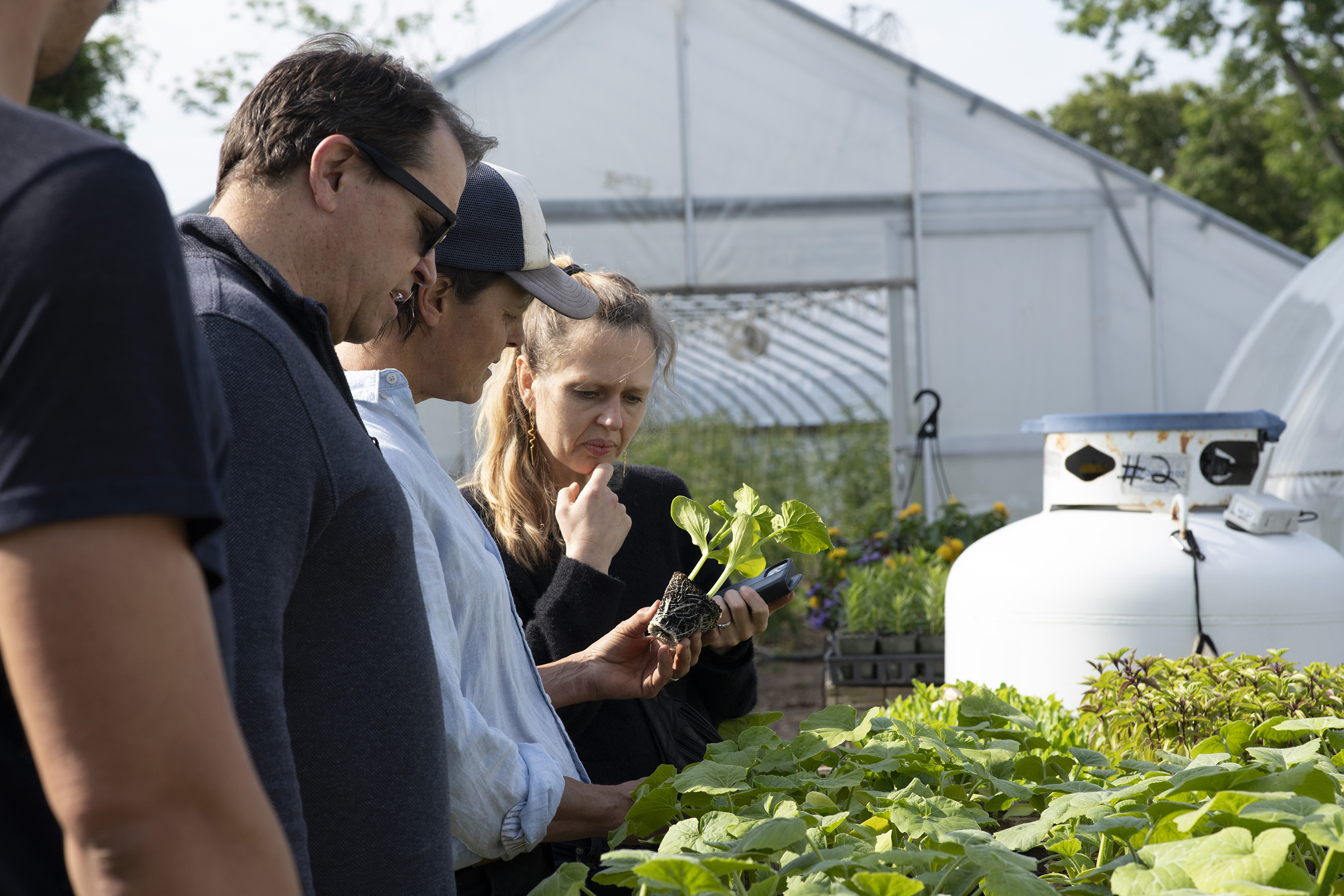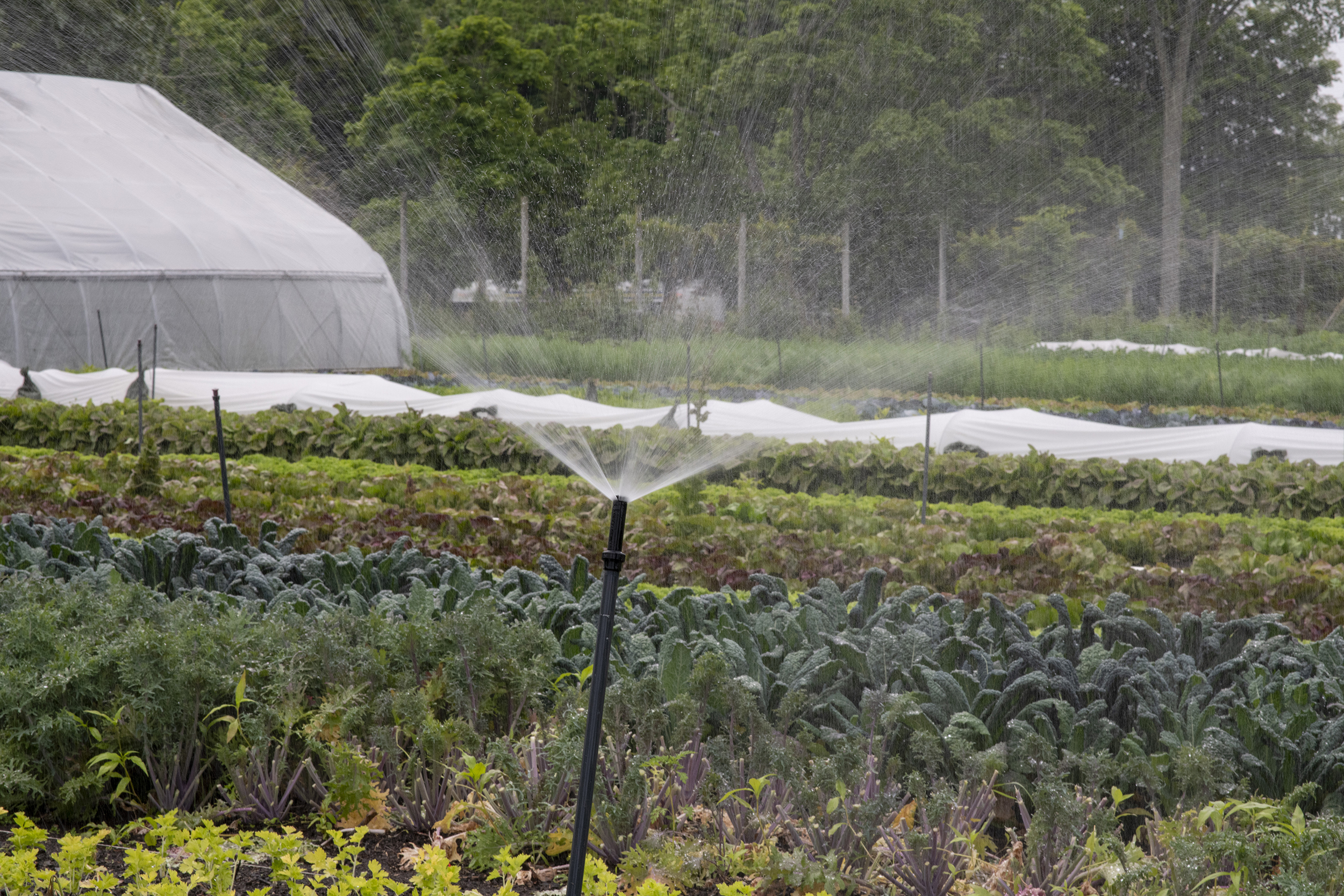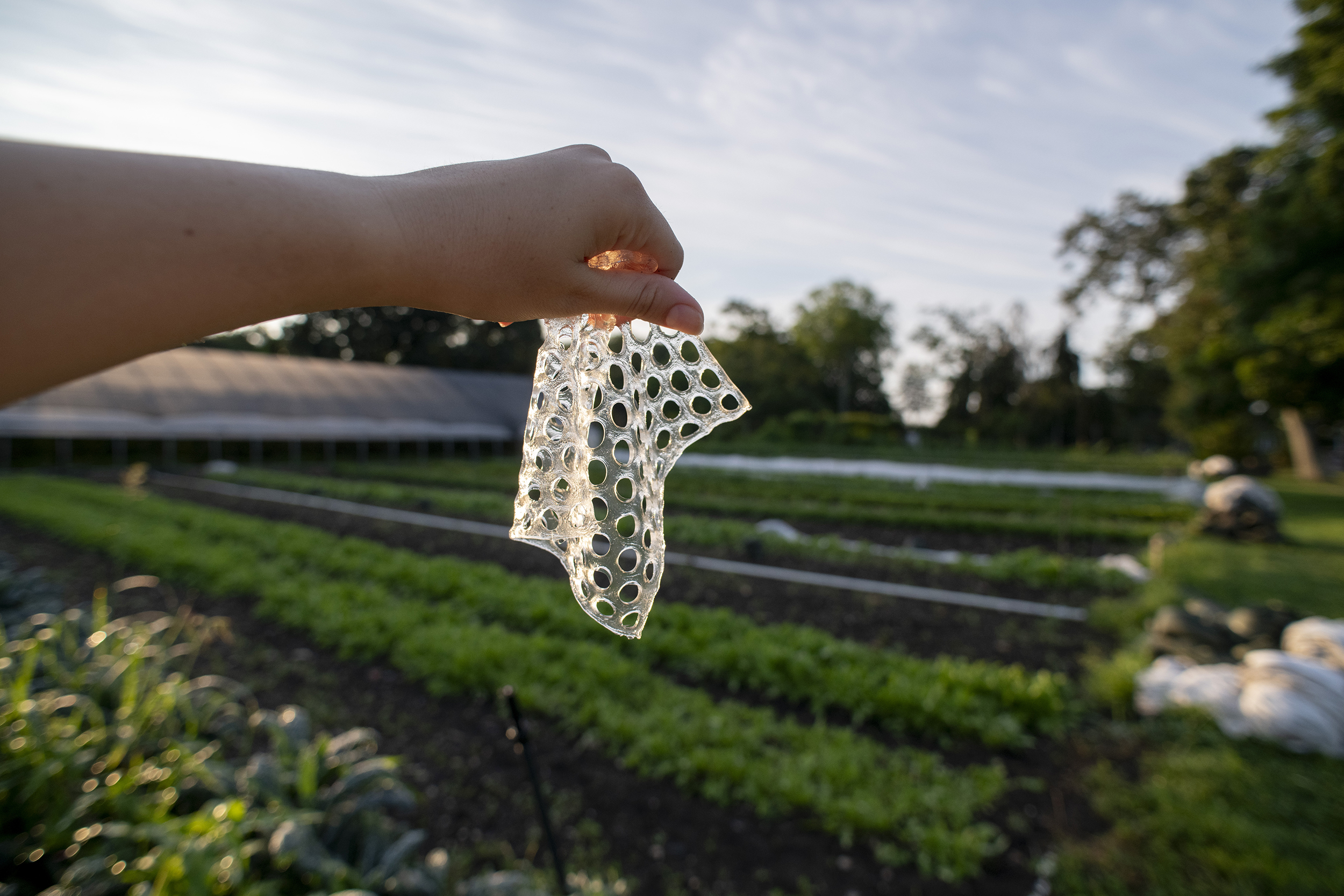Humanity is experiencing unprecedented challenges, from escalating climate change to widespread food and nutrition insecurity. In order to feed the fast-growing global population, countries need to produce more food on land strained by soil degradation and water scarcity. A team of chemists, designers, and researchers led by Pratt Institute, which recently received a $5 million cooperative agreement from the National Science Foundation (NSF), is working to develop seaweed-based water absorbents for their AquaSteady project that aims to help farmers in climate-impacted regions preserve water resources, regenerate soil health, and increase crop yields. The funding follows an earlier $750,000 NSF award and is part of a broader $35 million investment by the US National Science Foundation Convergence Accelerator in partnership with the US Department of Agriculture (USDA).
“The AquaSteady project is an important example of the critical work being done at Pratt and its partner institutions to confront global and multifaceted challenges like the climate crisis,” said Pratt Institute President Frances Bronet. “Through collaborative, out-of-the-box creative thinking, and partnership with other researchers and communities both in New York and around the world, Pratt’s AquaSteady team is working to build the just and sustainable future we so urgently need.”
The AquaSteady team is developing seaweed-based hydrogels that balance soil moisture, allow crops to withstand droughts between irregular rainfalls, and reduce the need for irrigation. AquaSteady absorbs water from the soil when it is wet and gradually returns it when the soil dries. It can be formed into an anti-erosion net or other shapes, depending upon specific soil and crop needs. This can help agriculture adapt to an increasingly water-scarce future, in which water resources are depleted by industrial activity, rising temperatures, and shifting precipitation patterns.
The AquaSteady project was initiated at Pratt in 2021 as a solution to be used in food packaging. However, the project changed its focus to applications in agriculture to have a larger impact, and in 2022, the project received a $750,000 award from the NSF Convergence Accelerator, which enabled ideation, further development of the hydrogels, and some in-field farm testing. The AquaSteady project also benefited from the NSF Convergence Accelerator’s curriculum, by developing their skills in human-centered product development, team science, project management, and communication, as well as forming partnerships to strengthen their technology solutions. The $5 million Phase 2 funding will be for three years, allowing the team to do further research and develop additional prototypes for AquaSteady. The team will test the hydrogel in different agricultural contexts, expand its partnerships, and create a sustainability plan beyond NSF support.
“Large problems such as mitigating the effects of climate change require the collaborative effort from professionals of diverse training,” said Helio Takai, dean of the School of Liberal Arts and Sciences. “AquaSteady is a project resulting from an interdisciplinary effort by scientists and designers at Pratt and experts in many fields related to agriculture, aquaculture, and material science. It is also a project where we collaborate with farmers to understand best firsthand the effects of climate change in the field.”
Pratt faculty member Cindie Kehlet, professor of chemistry, is acting as principal investigator of the project, with Helio Takai, dean of the School of Liberal Arts and Sciences, and Karol M. Murlak, professor of industrial design, acting as co-principal investigators. Jon D. Chorover, interim associate vice president for research in agriculture, life and veterinary sciences, and cooperative extension at the University of Arizona, George John, a professor of chemistry and biochemistry at The City College of New York (CUNY), John Idowo, extension agronomy specialist from New Mexico State University, and David Sotomayor, soil science faculty professor from the University of Puerto Rico, are also co-principal investigators on the team. The effort also includes farmers, consultants, and other businesses partnering in various capacities.
“I am delighted to be working on a project that has the potential to have a large impact on society by making agriculture more sustainable while at the same time mitigating the climate crisis,” said Kehlet. “The project is about preserving water while creating food—the two most basic ingredients for our existence.”
Production of AquaSteady will take place at Pratt’s Research Yard, where the project will be given expanded research and prototyping space. The AquaSteady project began as a part of the IDC Research Accelerator Hub and is supported by the IDC Foundation. The Research Yard is a 20,000-square-foot facility that Pratt opened in the Brooklyn Navy Yard in 2023 that features fabrication labs as well as interdisciplinary research centers and accelerators and the IDC Research Accelerator Hub. Pratt students have participated in the project in multiple ways, including through video and photographic documentation, communication design for branding and website, conducting user interviews, and prototyping and producing hydrogel samples.

The development of AquaSteady has the potential to create demand for a new sustainable industry centered around seaweed in the US. AquaSteady is made from alginate, a component in brown seaweed, and the team collaborates with Doall Aquaculture, which operates off the coast of Long Island. Doall Aquaculture cultivates and studies red kelp that extracts carbon, nitrogen, and phosphorus from the water while growing.
Some of the seaweed-based hydrogel forms being tested include powder that can be spread like fertilizer over areas and nets that can anchor soil and prevent erosion. AquaSteady is already being tested on farms in New York and São Paulo, Brazil, where a recent application of hydrogels allowed newly transplanted tree saplings to survive 45 days of drought, an outcome with promise for both agriculture and reforestation. The team is meeting with farmers in other locations to understand their needs and will provide them with AquaSteady kits for ongoing data collection and collaboration.
“I am excited to see how design bridges the gap between science and pressing issues of the contemporary world, such as climate change, water scarcity, and food insecurity,” said Murlak. “What plays a key role in this process is a hands-on, iterative, and human-centered approach which perfectly complements analytical approaches specific to empirical science.”

Hydrogels are known in agriculture but they are not used widely since current versions are primarily petroleum-based and contribute to soil degradation. Kelp-based hydrogels have numerous environmental advantages: they’re biodegradable, they reduce greenhouse gas emissions, and they stimulate beneficial microbial growth within the soil, which can counteract global soil degradation caused by industrial agriculture.
The AquaSteady model also holds broader impacts. Kelp is easy to grow and can create jobs in coastal communities. Since kelp filters the water, improving marine ecosystem health, its cultivation can support fishing industries. Farmers on land stand to see their crop yields and incomes rise, and increased production of diverse crops can provide underserved communities with greater and more nutritious food security.
The AquaSteady research reflects Pratt’s long-standing commitment to sustainability. The school is a founding core partner in The New York Climate Exchange and recently received an AASHE STARS Gold sustainability rating. In the months ahead, the AquaSteady team will aim to partner with STEM education teachers in New York City public schools, as well as create a travel exhibition to increase awareness of how climate change affects our food system and our need for sustainable solutions.
AquaSteady’s hydrogels could soon transform food production by uniting aquaculture and agriculture—a type of circular economic thinking championed by the United Nations Sustainable Development Goals.
